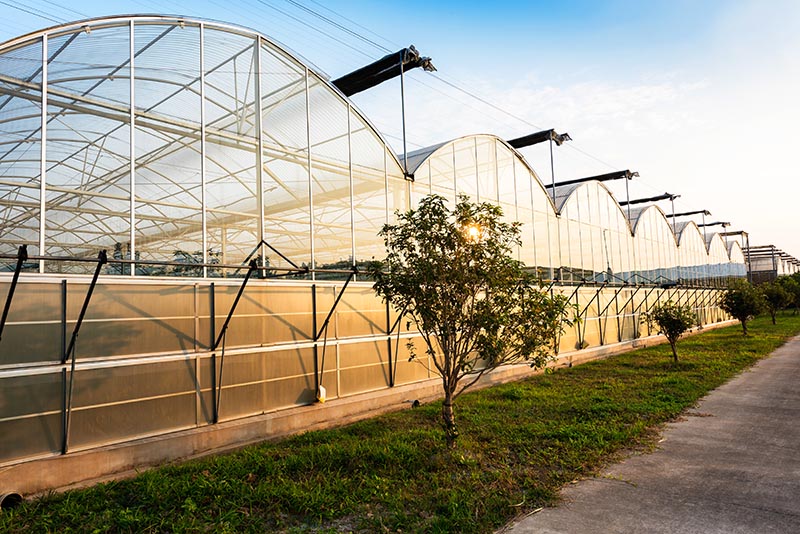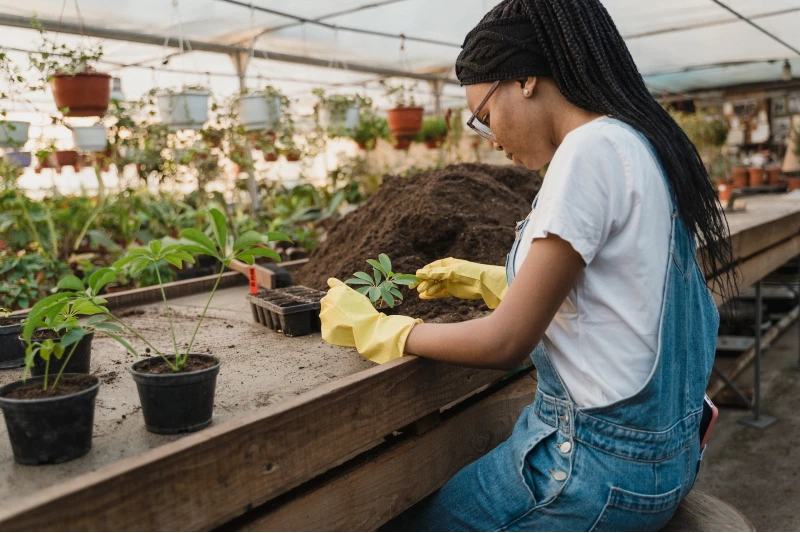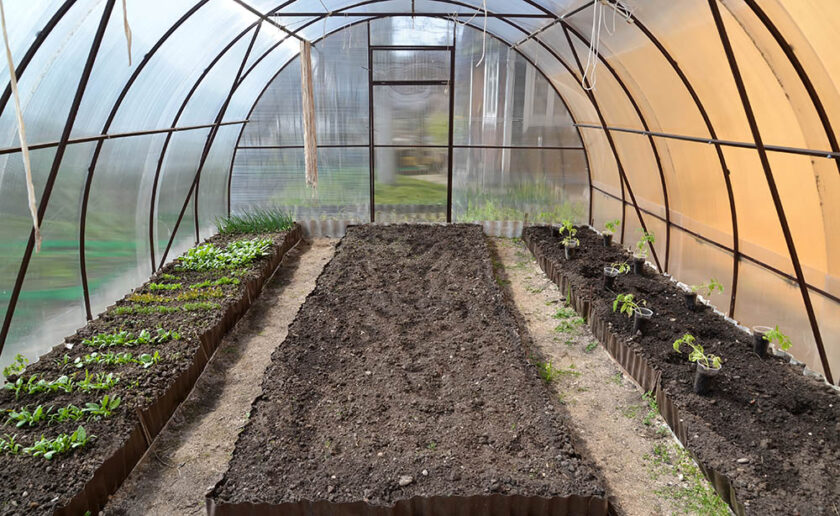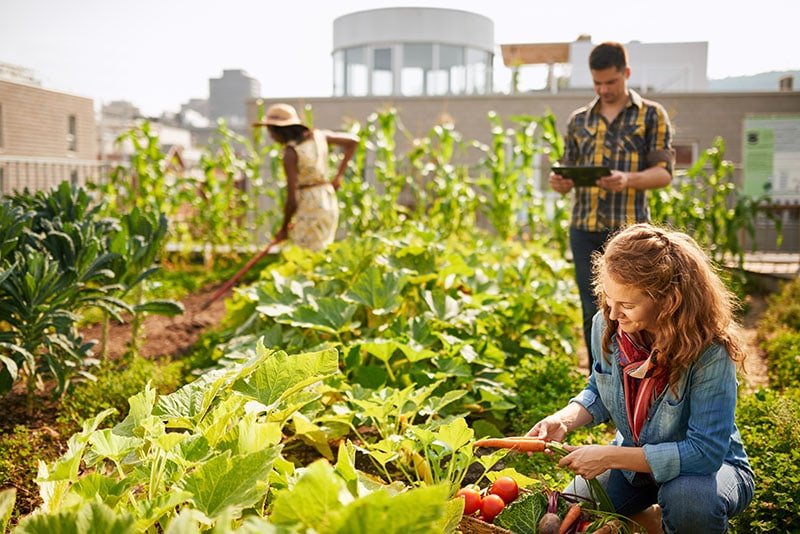How Do Greenhouses Work? Facts & FAQ
-
Codee Chessher
- Last updated:

Most people probably have a general idea of what greenhouses look like: big glass domes with lots of plants inside. Beyond that, surprisingly few people actually understand exactly how they work. Greenhouses use glass or plastic to trap heat, which helps plants grow in colder climates.
In this article, we’ll dig into how greenhouses work, their variations, and much more relevant info. Stay tuned with us below as we delve into this fascinating topic.
Topics discussed in this article:
- What Is a Greenhouse and How Does It Work?
- What Materials Are Used to Construct Greenhouses?
- Where Are Greenhouses Used?
- Advantages of Greenhouses
- Disadvantages of Greenhouses
What Is a Greenhouse and How Does It Work?
Greenhouses have evolved a lot over the years and centuries, but at their heart, they’re an artificial environment designed to help plants grow. At a minimum, greenhouses must let light, air, and heat in to allow plants to grow and thrive. You’re probably wondering how this is any different from just growing plants in the ground where they get all that without the fancy panels.
The difference is that greenhouses allow you to grow plants outside of their normal growing season. Let’s say you live in a very cold, arid climate but want to grow hot peppers. The only way is with a greenhouse! They come in all sizes, too, from relatively small boxes to the large futuristic domes that have become synonymous with the word greenhouse.
How Greenhouses Work
Most greenhouses use transparent glass or plastic sheets or panels which trap heat via the greenhouse effect, which has become notorious for its role in manmade climate change. When sunlight enters the greenhouse, the energy is converted to heat upon hitting leaves, the floor, and other solid surfaces. Normally, that heat would simply dissipate, but in a greenhouse, it can’t escape and raises the temperature inside.
To aid plant growth, greenhouses are also typically equipped with ventilation systems to circulate air and provide fresh oxygen. Depending on the setup, some may also have other climate controls like air conditioning to regulate temperature, humidifiers for humidity-loving plants, and dehumidifiers for plants that like it a bit drier.
A major downside of greenhouses is that a single space can only be used to grow plants that like similar conditions. For instance, you can’t grow cool-loving broccoli and heat-loving peppers in the same greenhouse. For that, you’d need two greenhouses. Despite that restriction, it’s perfectly possible to have multiple smaller greenhouses to simulate different sets of conditions. With that said, it requires more time, energy, materials, and money to do so.
Water and fertilizer are two other essentials you need to stay on top of too. Greenhouses can accelerate plant growth because of the concentrated light and heat, but that means the plants will burn through water and nutrients like there’s no tomorrow. It would be wise to keep an ample supply of fertilizer and to check your plants’ soil moisture levels more regularly than you would for an outside plant.
A greenhouse can be as basic or extravagant as you wish. Some common accessories include growing mats for germinating seeds, covers to maintain humidity levels, and grow lights. The grow lights are especially important because a greenhouse needs at least 6 hours of sunlight a day, but preferably 8 hours. If your area can’t accommodate that, grow lights are a lifesaving supplementary measure.

What Materials Are Used to Construct Greenhouses?
There are three major types of materials used to build greenhouses, and each merits their own subsection here. Let’s check out the key characteristics of each greenhouse material so you can better understand which might be suitable for your next garden project.
Glass
- Brittle and vulnerable to impact damage
- Doesn’t yellow with UV exposure
- Heavy and difficult to install
- Relatively expensive
- Overheat easily, making ventilation systems a must
- Requires cleaning
- Retains heat very well
Polycarbonate
- Resistant to impact and scratch damage
- More affordable than glass
- Lightweight and easy to install
- Yellows over time due to UV exposure
- May be susceptible to shrinking/expanding from extreme temperature changes
- Less effective at trapping heat than most multilayered glass domes but better than single-layered glass
Solid Polyethylene
- Cheaper than both glass and polycarbonate panels/sheeting
- More lightweight than polycarbonate and even easier to install
- Relatively poor insulator and prone to temperature fluctuations
- Requires ample ventilation and dehumidification to offset trapped condensation
- More opaque than other materials, which provides a bit of privacy but also less light for your plants
Woven Polyethylene
- More labor-intensive to make than its solid counterpart, which justifies a higher price tag
- Easier to install than solid polyethylene
- Poor insulator
- Great ventilation, which helps prevent mold growth inside
- For best results, needs strong sunlight or grow lights
- UV-resistant
- Requires more regular cleaning than other materials

Where Are Greenhouses Used?
Greenhouses can be used literally anywhere you can grow plants, and even in many places where you can’t typically grow them. They provide shelter from inclement weather in cold, desert, and other environments while trapping sunlight. Even cloudy climates can benefit from a greenhouse by supplementing with grow lights to compensate for the scarcity of sunlight.
Some people think that greenhouses are large, but many are the size of a box or little more than a glorified gazebo. People have them in their backyards to grow their favorite veggies/fruits, researchers use them to study plants, and the agriculture industry uses them too. People have been using them for literal ages, with some of the first being traced back to the Roman Empire.
Regardless of why you’re growing plants, you can certainly do it in a greenhouse if you take care to choose the right size, materials, and keep the plants’ specific requirements in mind when setting it up.
Advantages of Greenhouses
- You can extend your growing season for many crops; cool-weather Brassicas are a great one to try at home
- May be vulnerable to pests, depending on how sturdy the construction is
- Smaller versions available for limited space
- You can add climate control to more exactly maintain the ideal growing conditions for your plants
- Used properly, they can significantly increase yields for crops
- Protects from soilborne disease
Disadvantages of Greenhouses
- Costs a lot to set up
- Requires a lot of cleaning and maintenance, depending on the size
- For best results, requires expensive climate controls
- May suck up a lot of water and electricity, raising your bills
- Can only simulate a single set of growing conditions per space, making it trickier to grow multiple out-of-season plants at the same time

Frequently Asked Questions (FAQs) About Greenhouses
Do Greenhouses Handle Inclement Weather Well?
It all depends on how the greenhouse is constructed and how extensive the ventilation system is. For climates where it gets below zero, you’ll have to crank up the heat and close your external vents to mitigate damage from cold snaps. Sudden drops in temperature can be detrimental and even deadly for greenhouse plants, just like outside plants!
Why Are There Bugs in My Greenhouse?
Bugs love greenhouses and they’ll gladly sneak in and infest one given the opportunity. Hobbyist greenhouses are the most vulnerable because they’re usually muggier due to a lack of sophisticated climate control equipment. Humid, warm, and no natural predators? Talk about bug paradise. You can combat aphids and flies with just some soapy water, but serious infestations may require pesticides.
What Are the Most Balanced Temperature and Humidity Levels for Growing a Variety of Plants in a Greenhouse?
Most plants can tolerate temperatures from 60 to 70 degrees Fahrenheit with an average humidity level of 40% to 60%. There are notable exceptions in both upper and lower temperatures.
Conclusion
Greenhouses are an essential tool for agriculture and horticulture, helping you extend growing seasons, start seedlings, and grow out-of-season plants in more controlled conditions. You may even notice your plants doing better in a greenhouse if you’ve taken special care to adapt the conditions to their liking.
- See also: 8 Types of Greenhouses (with Pictures)
Featured Image Credit: west cowboy, Shutterstock
Contents
